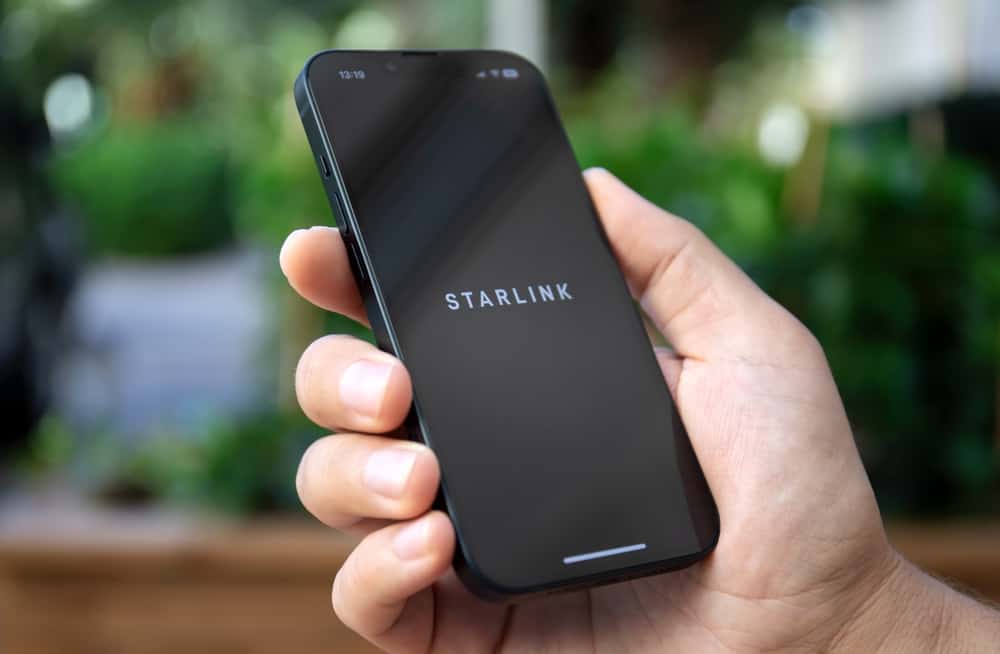Is Starlink the Best Satellite Internet Option? Everything to Know About Starlink
Starlink is revolutionizing satellite internet, but is it the best option for rural internet users?

- SpaceX and Starlink are on a mission to make satellite a competitive provider against trusted cable and fiber internet services.
- Starlink features high monthly and upfront costs for even its standard service.
- Starlink can offer rural internet users up to 220 Mbps of download speed.
Satellite internet is known as the worst method to connect to the internet because of long latency times, low bandwidth, and inconsistent signal. Enter SpaceX’s Starlink, which seeks to clean up satellite internet’s reputation and provide a next-generation broadband connection capable of keeping up with modern internet needs. With Elon Musk at the helm, Starlink internet may be as revolutionary to the broadband world as the electric car is to the automotive world.
Table of Contents
- Starlink Mini Unboxing and Setup
- Satellite Internet 101
- Starlink’s Promise
- How Starlink Works
- Starlink Speeds
- Starlink Costs
Starlink Mini Unboxing and Setup
Curious to see what the Starlink Mini looks like and how long it takes to set up? Check out our video below:
Satellite Internet 101

Wired connections such as DSL, cable and fiber optic rely on a physical line buried underground between you and your internet service provider’s infrastructure. Satellite internet is the opposite. Instead, users rely on satellite dishes to bounce data from their provider and back.
That generally means satellite internet can’t reach the high speeds offered by wired connection types. Most satellite internet providers advertise download speeds between 50 Mbps and 100 Mbps, and in a recent FCC report, the organization found that most satellite providers achieved advertised speeds during peak hours.
While it’s not the best type of internet on the market, satellite internet is sometimes the only viable option for rural residents. That’s why Starlink has set out to make satellite internet a feasible, competitive option even when pitted against wired connection types.
Starlink’s Promise
Starlink advertises that users will be able to participate in activities — such as online gaming, streaming, and video calls — that were previously off limits to people with satellite internet. In theory, Starlink’s satellite network can deliver download speeds of up to 150 Mbps to any place with a clear view of the sky.

Since 2020, Starlink has revolutionized the way rural internet users access the web via a satellite connection. The user reviews and responses speak for themselves, with many users celebrating the absence of data caps, the simple contract, and, most importantly, the network performance.
How Starlink Works

Traditional satellite internet involves transmitting data via radio signals back and forth from satellite dishes on the ground to satellites in orbit 22,000 miles above the ground. SpaceX’s Starlink satellites operate much lower: 340 miles above the surface of the Earth. Because the satellite signals have less distance to travel, they can bounce from their ground station to their satellite in orbit to the user much faster than previously possible.
Starlink vs. Other Top Satellite Providers
For a better idea of how Starlink compares to other traditional satellite internet providers, we put together the table below.
| Provider | Monthly price | Download speeds (up to) | Data cap |
|---|---|---|---|
| Starlink | $40–$165 | Up to 400 Mbps | Unlimited except for Roam – 50 GB plan |
| Viasat | $39.99–$119.99 | Up to 150 Mbps | Unlimited with Viasat Unleashed |
| Hughesnet | $39.99–$94.99 | Up to 100 Mbps | Unlimited (Priority Data ranging from 100-200 GB) |
Starlink Wi-Fi Speeds

Starlink offers download speeds ranging from 100 Mbps to 400 Mbps and upload speeds reaching 35 Mbps — much faster than satellite internet competitors such as Viasat. But how does Starlink internet actually perform? Ookla’s Q1 2025 research on Starlink performance showed the satellite internet provider had an average download speed of 104 Mbps and an average upload speed of 14 Mbps.
SpaceX has revealed plans to increase download speeds as it launches more satellites, aiming for 300 Mbps, 1 Gbps and 10 Gbps. Download speeds up to 1 Gbps are currently available only to cable or fiber customers, while 10 Gbps speeds are exclusively in the realm of fiber. That reflects Starlink’s mission to provide satellite internet that can compete with wired heavyweights.
Starlink Costs
Starlink’s service starts at $40 per month for standard service and a $349 equipment fee at sign-up. Starlink offers a business service, boasting more stable connections and higher speeds for a monthly price starting at $140 and a $2,500 one-time fee for Starlink equipment. However, this plan is not limited to businesses only, and you can choose lower-priced equipment for either $349 or $699.
Wired internet providers have different price points. AT&T Internet service, which includes download speeds of up to 5 Gbps with AT&T Fiber, costs between $34 and $104 per month. In comparison, Xfinity plans range from $30 to $165 monthly for similar speeds.
Starlink may cost more than similar bandwidth from a wired provider, but its service can theoretically reach more places than wired providers, which is the whole point (and advantage) of satellite internet.
Conventional satellite internet providers such as Viasat and Hughesnet cost substantially less than Starlink, but you get what you pay for. Viasat offers internet service starting at $39.99 per month, but users only get download speeds reaching up to 150 Mbps. Hughesnet plans, on the other hand, offer top download speeds of 100 Mbps and plans that start at $39.99 per month.
Frequently Asked Questions About Starlink
What is the downside of Starlink?
Starlink’s higher upfront costs for equipment and service compared to traditional internet services may not be a feasible choice for budget-conscious homeowners. The provider’s performance can be inconsistent, especially if there are any physical obstructions that could disturb the signal. While Starlink is working on becoming more widespread, availability may be limited in some areas.
Is Starlink reliable in bad weather?
Starlink’s service is designed to withstand most weather conditions, including rain, snow and wind. However, severe weather like heavy storms or dense cloud cover can temporarily reduce performance, weakening the signal. While the system includes a self-heating dish to prevent snow buildup, excessive snowfall may need to be cleaned manually.
Does Starlink have phone service?
Starlink now offers mobile phone service, with direct-to-cell capabilities on the provider’s satellites. Mobile service starts at $50 per month with $599 upfront equipment costs.
How cold is too cold for Starlink?
Starlink’s equipment is engineered to operate in extreme temperatures, including freezing conditions. The dish’s self-heating feature can ensure uninterrupted performance in cold climates as low as -22 degrees Fahrenheit.
Does Starlink support gaming?
Starlink can be a decent option for gaming, especially in rural areas where high-speed alternatives are unavailable. It offers faster speeds and lower latency compared to traditional satellite internet. However, the latency, typically 20-50ms, is still higher than fiber or cable internet, which may affect competitive online gaming. Casual and single-player gaming generally works well on Starlink.
How fast is Starlink Wi-Fi?
Starlink’s typical download speeds range from 100 Mbps to 400 Mbps, depending on your location, plan type and network congestion.